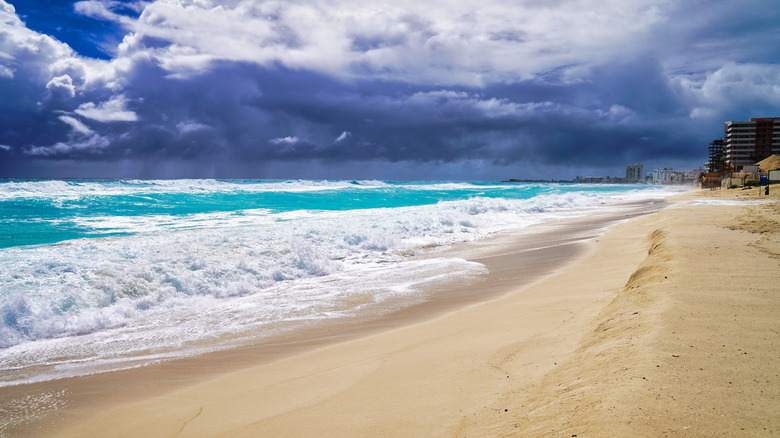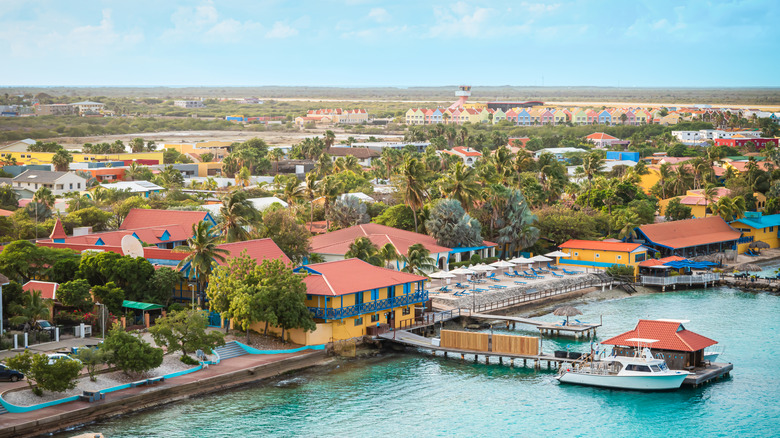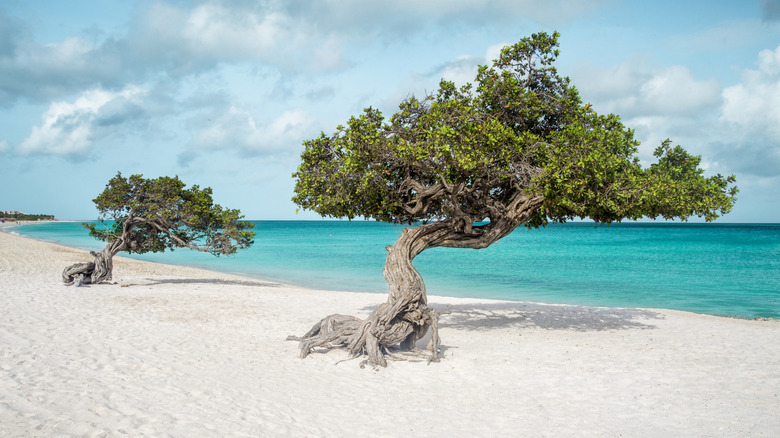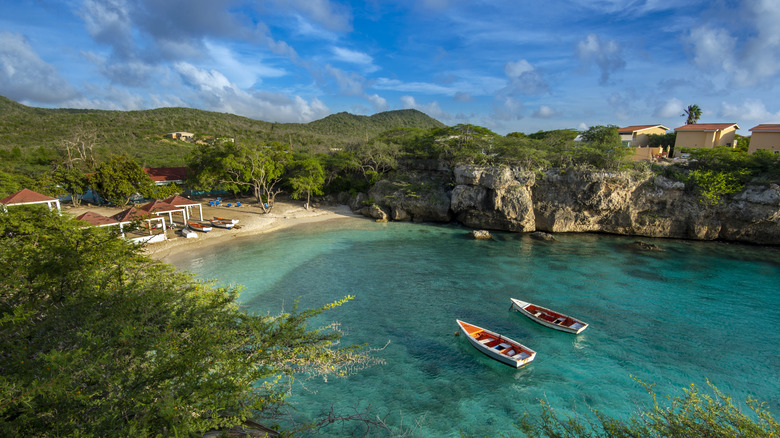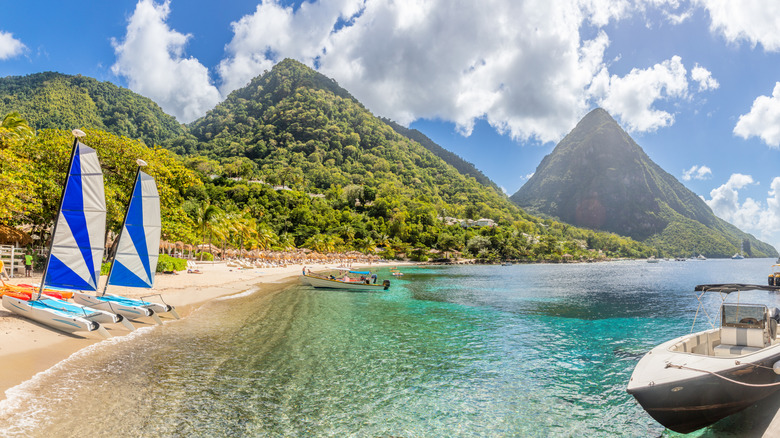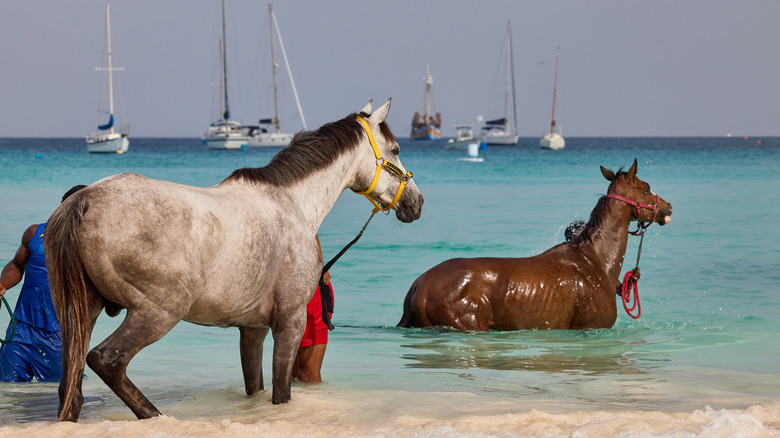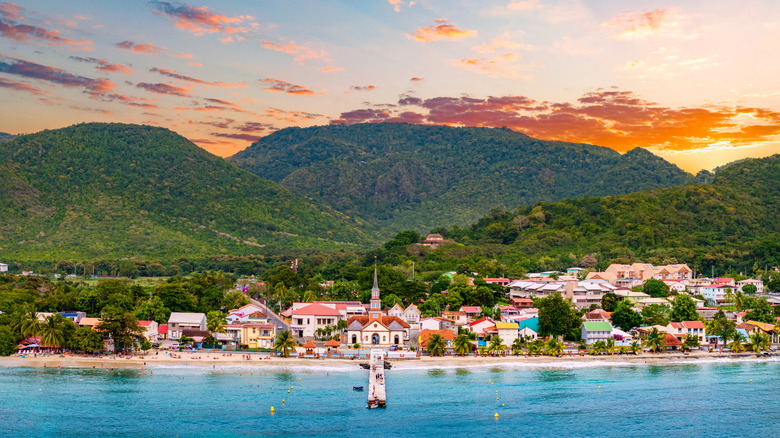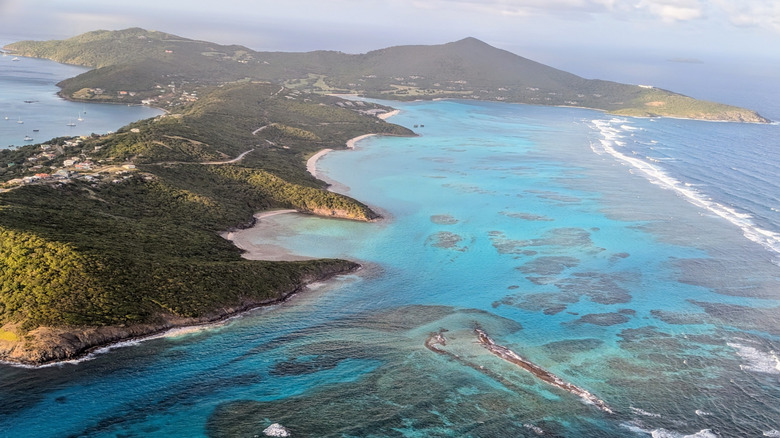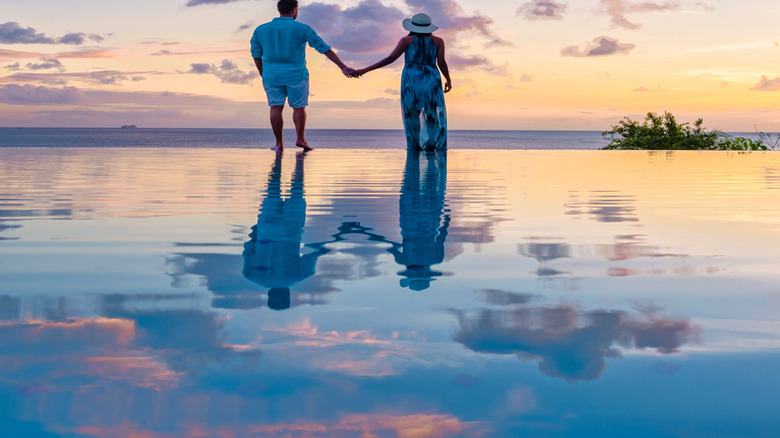The Safest Caribbean Islands To Visit During Hurricane Season, According To Research
Planning a Caribbean getaway during hurricane season may sound more dangerous than it actually is. While the thought of traveling between June and November can raise concerns about tropical storms and unpredictable weather, not all Caribbean destinations carry the same level of risk. By choosing the right destination, it is entirely possible to enjoy sun-soaked beaches, turquoise waters, and vibrant island culture without the looming anxiety of severe weather. The fact of the matter is hurricane season in the Caribbean is very real but by no means uniform. Some islands lie directly in the path of the most active storms, while others sit outside the traditional hurricane belt and have experienced significantly fewer impacts over the years.
With a better understanding of the Caribbean's geography and historical weather patterns, it is now easier than ever for researchers, meteorologists, and everyone else to get the lay of the land (or the skies) ahead of time. As a result, travelers can narrow down their vacation options to destinations where the odds of encountering severe weather are lower, if not virtually non-existent. Many getaway spots in this part of the world have also built strong reputations for their resilience and relative protection during storm season, making it much easier to leave most of your worries behind even if the weather unexpectedly changes on a dime. That said, here are the safest Caribbean islands to visit during hurricane season so you can kick back and relax seaside without constantly checking the forecast.
Bonaire
Bonaire is one of the go-to destinations for snorkeling and diving in the Caribbean, even during hurricane season. Thanks primarily to its location, this underrated tropical paradise is positioned to the south of the high-risk zone, also known as the Atlantic hurricane belt. Located just north of Venezuela and outside the common paths of major hurricanes, Bonaire enjoys a natural buffer from the tropical systems that typically form in the eastern Atlantic and travel westward across the region. As a result, this island paradise boasts a mere 2.2% annual risk of a hurricane strike and rarely, if ever, experiences the direct impact of any nearby hurricanes, making it a reliable destination even during the peak storm months from June to November.
In fact, no hurricane has made a direct landfall on the island in recorded history. More than just luck, this island's position near the equator also means that the necessary conditions needed to sustain hurricanes are rarely present here. Due to favorable trade winds, the weather in Bonaire is often pleasant and stable. The overall climate in Bonaire is warm, dry, and inviting throughout the year, with average temperatures ranging between the mid-80 and low-90 degrees Fahrenheit, making uncertain or disruptive weather conditions less likely on this delightful island.
Aruba
Another Caribbean island that you can visit during hurricane season is Aruba. This white-sand Caribbean haven is simply splendid around this time of year due to its consistent weather conditions and geography. In fact, when it comes to Aruba's dry climate, there is limited rainfall throughout the year (averaging only about 18 inches annually), and temperatures (for the most part) remain around 82 degrees Fahrenheit. Other weather-related factors that make Aruba almost hurricane-proof are its consistent trade winds and cooler ocean waters. When combined, they create conditions that are less conducive to the formation (or intensifying) of tropical storms and act as natural deterrents, preventing potential hurricanes from gaining strength as they approach the island.
What's more, Aruba does not experience the significant impact of severe tropical storms too often, primarily due to being situated south of the main hurricane belt. The island of Aruba typically remains unaffected by hurricanes no matter what the broader region may be dealing with. A prime example of this is when Hurricane Felix was nearby in 2007 — the island only experienced heavy rain and strong winds. Aruba has not had a direct hit in over a century, giving weight to this island's reputation as an ideal low-risk destination and as a magical spot for a couple's vacation.
Curaçao
The third member of the ABC (Aruba, Bonaire, and Curaçao) Islands, Curaçao is a part of the Dutch Caribbean — and is one of the more reasonable options to choose when vacationing during hurricane season. As with Aruba and Bonaire, Curaçao is positioned in such a location that it is safe from storms that form in the Atlantic and make their way to northern parts of the Caribbean. Venezuela, which lies to the south, also acts as a shield for the island, insulating it from severe weather. Historically, only a handful of hurricanes have occurred on this island, with the last direct hit happening in 1877.
Curaçao also has an amenable and semi-dry climate year-round, making weather-related trip disruptions unlikely. And since sunny skies and warm temperatures are the norm, the occasional light shower rarely ruins visitors' travel plans or their itineraries. Thanks to this island's reliable weather, enjoying outdoor activities, exploring the island's rich cultural heritage, and embarking on some of the best day trips in the Caribbean can all be enjoyed without the concern of severe weather. Another bonus is that Curaçao's infrastructure and preparedness — which includes seminars held by the Curaçao Tourist Board (CTB) for the entire tourism sector — contributes to its status as a safe destination, as the authorities here are well-equipped to handle any weather-related emergency.
Saint Kitts and Nevis
The dual-island nation of Saint Kitts and Nevis is also safe to visit during hurricane season, mainly because of its location and terrain. Continuing the theme, these twin islands are located in the northeastern part of the Lesser Antilles, just beyond the infamous hurricane belt. While storms can still happen, these islands are less likely to be directly affected compared to nearby destinations, such as the Dominican Republic, Puerto Rico, or the Bahamas. Historical weather patterns show that major hurricanes tend to pass north or south of Saint Kitts and Nevis, making direct hits rare, even in the face of stronger storms.
Moreover, Saint Kitts and Nevis have hilly, volcanic terrain, which has been shown to lessen the effects of storm surges in certain instances. Even so, these twin islands have quality disaster preparedness protocols in place. The government has also taken steps to update building codes and set up early warning systems. Plus, hotels, businesses, and local communities are trained and ready to respond in the event of a disaster. So, you can focus on exploring both islands' ample history, enjoying beach activities, and experiencing their vibrant nightlife scenes instead of expecting the worst — and while no vacation destination (budget-friendly or otherwise) in the Caribbean is completely safe during this season, arguably, Saint Kitts and Nevis come relatively close.
Antigua
Antigua is a first-rate island paradise, whether you are in need of some much-needed recuperation, a family-friendly getaway, relaxation for two, or a solo adventure. And even though experiencing a hurricane while visiting between June and November is a real possibility here, statistically speaking, Antigua has had fewer direct hits and a consistent history of milder storms, especially in comparison to other islands located near the southern edge of the hurricane belt. What's more, the National Oceanic and Atmospheric Administration has determined that major storms tend to curve northward around this part of the Caribbean — often sparing islands such as Antigua from the worst effects.
Additionally, Antigua's overall topography and size continue to mitigate the potential damage from passing storms. Thanks to a rather low elevation and more compact mountain ranges, landslides and flooding are less likely here (which are common dangers during this time on more mountainous Caribbean islands). And since Antigua is on the smaller side, efficiently communicating across the island, quickly implementing evacuation procedures, and immediately beginning recovery efforts in the aftermath of severe weather is not a problem. Antigua also takes pre- and post-hurricane preparedness and spreading awareness (via their Radio Resilience initiatives) very seriously. Plus, this island's hotels and resorts are equipped with the necessary contingency plans and supplies (backup generators, portable water, evacuation transportation, and a designated emergency coordinating committee), allowing travelers to feel a whole lot safer here.
Saint Lucia
Saint Lucia is a spectacular destination overflowing with mountains, waterfalls, beaches, and even drive-through volcanos. Thus, vacationing here between June and November is rarely a bad move when it comes to amazing things to see and do. But that's not all — as this particular island is positioned out of harm's way and has significantly lower chances of a direct hurricane hit compared to other northern Caribbean destinations. To date, only a handful of hurricanes have come close to Saint Lucia, with just one making a direct impact in recent decades.
Even powerful storms like Hurricane Maria in 2017, which passed north of the island, barely caused any disruption. Not only does Saint Lucia have a built-in layer of protection due to its mountainous terrain, which acts as a buffer for strong winds, but it also has sheltered bays, such as Marigot Bay, that help to lessen storm surges when nearby hurricanes occur. Saint Lucia also invests heavily in disaster preparedness and works with renowned agencies, including the National Emergency Management Organization (NEMO), to ensure everyone's safety. A bonus for travelers is that the hospitality industry here knows that weather conditions are unpredictable. Therefore, many all-inclusive resorts and accommodations come with the Saint Lucia Hurricane Guarantee, which offers flexible rebooking or cancellation if a hurricane warning is issued.
Barbados
Barbados is home to hundreds of beaches and is also one of the safer island getaways between June and November. There are several reasons for that. In addition to its ideal, relatively hurricane-free location in the eastern part of the Caribbean, Barbados's last catastrophic weather event — Hurricane Janet — happened in 1955. Although there have been a number of tropical storms since then, the island's ongoing efforts to be one of the most well-equipped destinations when it comes to hurricane preparation have been remarkable and have helped to limit the damage caused by later, lesser storms. On average, the weather is generally sunny, often hovering around high temperatures, and the majority of tropical storms tend to move north of the island. It has everything going in its favor, but this nature lover's dream come true still has no plans of being caught off guard again.
Both the government and the Department of Emergency Management (DEM) run regular emergency drills, promote storm safety tips, and keep ample hurricane shelters ready with all kinds of supplies. Plus, the locals do their part — from taking proactive measures to providing vital assistance in an emergency and more, weathering the storm is definitely a team effort here. Tourist safety procedures for severe weather and weaker tropical storms are also routinely improved upon. And clear protocols, backup generators, trained staff, and immediate access to medical care are a part of keeping visitors safe and sound. Even the airport is fully prepared to handle weather delays or rerouted flights, making Barbados a carefree getaway from beginning to end.
Martinique
Martinique is a French territory that is overflowing with vibrant plant life and a wealth of amazing island vacation activities. However, this lesser-visited gem also happens to be situated in the southeastern part of the Caribbean, slightly within the hurricane belt, which can be cause for concern. The good news is that Martinique tends only to experience mild tropical storm conditions and rarely faces the full force of direct hurricane landfall. And the prevailing winds and ocean currents typically steer stronger storms north of the island, making this particular island a lot less vulnerable than many of its neighbors. In fact, looking at historical weather patterns from the last 70 years, Martinique has had a limited number of direct impacts from tropical cyclones, none of which have reached major hurricane status.
There have been close calls, but when faced with such formidable weather systems as Hurricane Maria in 2017 and Hurricane Beryl in 2024, both storms passed by Martinique without leaving behind any real damage in their wake. Nonetheless, Martinique has still made it a point to develop more robust infrastructure and implement numerous disaster preparedness protocols, which include water distribution, road clearing, and power restoration plans, in case of any weather-related emergency. And by using storm-resistant construction techniques and complying with modern safety codes, most of the buildings here are made to weather even the roughest of conditions. This well-protected Caribbean escape also has emergency services and in-depth tropical threat warning systems on standby during these turbulent months of the year.
Saint Vincent and the Grenadines (SVG)
Also located in the southeastern part of the Caribbean Sea, Saint Vincent and the Grenadines (SVG) is an archipelago made up of 32 islands and cays, which lies in the area where the most intense and frequent storms tend to form and subsequently pass. Most Atlantic cyclones develop off the coast of West Africa and track westward across the Atlantic, veering northwest as they approach the Caribbean, leaving southern island chains like SVG less exposed but not necessarily in the clear. If tropical systems do reach SVG, however, they tend to weaken or downgrade to lower-category hurricanes due to the cooler sea surface temperatures and atmospheric conditions that are less likely to intensify storms.
So, during hurricane season, visitors can enjoy this archipelago's pristine beaches, explore its rain forests, and marvel at waterfalls along with other one-of-a-kind attractions without fretting about sudden changes in weather. If a tropical storm looms on the horizon and does not follow historical patterns, thanks to the widely implemented hurricane procedures manual, "Caribbean Disaster Mitigation Project," created by the Caribbean Tourism Organization and the Caribbean Hotel Association, SVG is fully prepared. And with one of the smaller populations in the Caribbean, SVG's infrastructure is more localized, making a coordinated response to an approaching storm very streamlined — this was more than evident with Hurricane Beryl in July 2024. Before this event, SVG had not seen any categorical storms since 1898, which was attributed to its geography and lower storm frequency.
Methodology
To identify the safest Caribbean islands to visit during hurricane season, we began by analyzing storm data from NOAA to track how often significant storms hit popular island destinations, as well as getting an idea of how severe the weather in a given location typically is during the hurricane season. The INFORM Risk Index was also utilized to assess an island's level of disaster preparedness. This included looking at their emergency plans, early warning systems, and how quickly the relevant services were able to respond to crises. Tourist safety was another crucial element taken into consideration; we reviewed official travel advisories as well as contingency plans that are in place for accommodations and local businesses frequented by visitors. Additionally, the strength and reliability of an island's infrastructure — such as roads, buildings, and power systems — was considered. The good news is that, for most destinations, infrastructure seems to be improving all the time.
Finally, climate change readiness and geographical location were also assessed. Caribbean destinations that are actively working to reduce future risks through adaptation and protection efforts were rated more positively. And islands located south (or outside) of the main hurricane belt, such as Aruba, Bonaire, and Curaçao, were rated as some of the safest destinations from June to November since tropical storms and severe weather were less likely to occur there. By combining all these factors, we were able to create a practical, data-backed list of the safest Caribbean islands to consider visiting amidst hurricane season — so you can plan your dreamy island getaway confidently and accordingly.
